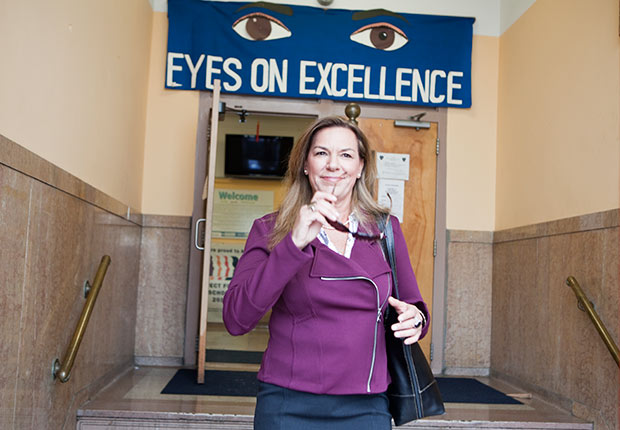AARP Hearing Center

By Donna Liquori
For Virginia Illiano, 55, early retirement didn’t quite add up.
After a career teaching elementary school for 30 years, she’s back working as an educational consultant and substitute teacher to help her daughter pay back student loans.
“I’m planning to work another 10 years,” said Illiano. She was among 800 people who responded to an AARP survey in the New York City area earlier this year regarding their anxiety about retirement savings.
Illiano and two other Brooklynites who were surveyed agreed to talk about their worries.
A statewide survey, as well as select regional surveys, targeted voters ages 35 to 69. The surveys were conducted using a 15-minute telephone interview.
The resulting report, “High Anxiety: New York Gen X and Boomers Struggle with Stress, Savings and Security,” found that retirement is out of reach for many New Yorkers due to their lack of savings or access to a retirement plan.
The combination of the recent recession, vanishing pension systems, student debt—theirs and their children’s—and job mobility has changed the landscape for those approaching retirement.
Illiano doesn’t regret sending her daughter to a private college, which has led to an entry-level job as a sound engineer at Lincoln Center, perhaps paving the way for a solid career. But until the daughter gets her own financial footing, she’s leaning on Illiano by living at home.
“That’s the choice I made,” said the divorced mother, who worries about younger generations. “They’re choking,” Illiano said. “If I live to 120, I will still get my pension. They don’t have that. They have a 401(k) that they can choose to open or not.”
Like many New Yorkers, she supports a potential state-facilitated retirement fund that would help workers save automatically.
AARP is proposing such an option, with no ongoing taxpayer costs, to help those who lack a job-based savings plan achieve financial independence. The majority—76 percent of the Gen Xers surveyed and 74 percent of boomers—said the state should create a Work and Save plan, modeled on the state’s successful 529 college savings program.
Illinois, Oregon and Washington have passed legislation to establish similar plans, and about 20 other states are considering them.
Obstacles to savings
People in their 30s and 40s “are juggling multiple responsibilities—caring for aging parents, trying to pay for their children’s college and working long hours,” said Beth Finkel, AARP New York state director.
“Lost is the time to manage their finances," she said. "A state-facilitated retirement plan would ease their worries, especially if their employers do not offer 401(k)s or other plans.”
As the first Gen Xers turn 50 this year, they aren’t faring very well either when it comes to retirement plans. At 40, Susanna Austin is a hospital intern, having switched from a career in market research to mental health work. “I don’t feel I’ve done enough to prepare,” she said. “I really haven’t been able to save a lot.”
Austin, who is single and still paying off “outrageous” student loans, said she is anxious about “not knowing what the future will hold, how long your money will last and whether you’ll be able to maintain a decent lifestyle.”
The statewide survey found that 74 percent of Gen Xers and 62 percent of boomers worry about not saving enough. Thirty percent of Gen Xers and 38 percent of boomers don’t have any kind of retirement savings plan. And a quarter of all those surveyed who are working are not confident they will ever be able to retire.
Survey respondent James Born, 37, who is married and has a toddler, said it’s hard for his family to get ahead. “We have no savings,” said the electrician. As for retirement, “I’m completely freaked out.”
For more information about the High Anxiety report, go to bit.ly/GenXodusR.
Donna Liquori is a writer living in Delmar, NY.































































